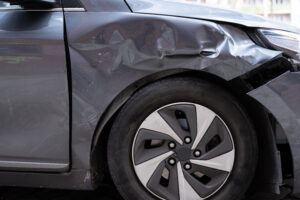 When someone else drives your car and causes an accident, the question of who’s responsible can get complicated fast. Maybe you let a friend borrow your vehicle for the weekend, or perhaps a family member was running errands in your car when they crashed into another driver.
When someone else drives your car and causes an accident, the question of who’s responsible can get complicated fast. Maybe you let a friend borrow your vehicle for the weekend, or perhaps a family member was running errands in your car when they crashed into another driver.
The answer isn’t always simple. Sometimes, the driver bears full responsibility, while other times, the car owner shares liability or even faces primary responsibility. Several factors determine how liability gets assigned, and insurance companies often try to shift responsibility in ways that minimize their payouts. Getting help from a car accident attorney ensures you understand your rights and obligations in these complex situations.
Understanding Ownership vs. Driver Liability
The driver of a vehicle is usually responsible for accidents, as they have direct control. However, car ownership also brings additional legal responsibilities that can extend liability beyond the driver.
Vehicle owners must maintain proper insurance and ensure their cars are safe to drive. If they fail to meet these obligations, they may face liability even if someone else was driving.
The relationship between the owner and driver also affects liability, with different scenarios applying to family members, employees, or casual borrowers. State laws vary in assigning liability between owners and drivers, with some holding owners more responsible than others.
Permissive Use and Liability
Permissive use occurs when a car owner gives someone permission to drive their vehicle, either explicitly or implicitly. When you give permission, you typically become liable for accidents they cause, and your insurance provides primary coverage.
Express permission involves clear authorization, while implied permission can be trickier to establish and may lead to disputes. If someone exceeds the scope of permission, such as using your car for unauthorized activities, it can limit your liability and affect insurance coverage.
For example, if you lend your car for work but the driver uses it for racing, they may have exceeded the scope of permission.
Non-Permissive Use Situations
When someone takes your car without permission, you’re typically not liable for accidents they cause. Car theft is a clear example, but you must report it promptly to maintain protection. Unauthorized borrowing by friends or family members can be tricky, as past patterns of vehicle sharing may imply permission.
There’s also exceeding the scope of permission, which means using your car for something different than agreed upon can also limit your liability. On the other hand, letting an intoxicated person drive your car can lead to liability. But if they get drunk after you give permission, the situation is more complex. A car accident lawyer can guide you and protect your rights in such complex situations.
Family Member Exceptions
Most states have special rules about family members who live in the same household as the car owner. These family car doctrines often make owners liable for accidents caused by family members, regardless of whether specific permission was given for that trip.
Spouse liability rules vary by state, but many places hold spouses mutually responsible for each other’s driving actions. This means if your husband or wife causes an accident while driving your car, you might face liability even if you weren’t involved in their decision to drive.
Teen driver situations create particular concerns for parents who own vehicles. Most states hold parents liable for accidents caused by their minor children, especially when the children live at home and regularly use family vehicles. This liability often extends beyond just insurance coverage to include personal asset exposure.
Adult children who live at home may also trigger family car doctrine liability. If your grown children regularly use your vehicles with your knowledge, you might be responsible for accidents they caused even when you didn’t specifically authorize their particular trip.
The family car doctrine recognizes that families often share vehicles informally, and holding owners liable encourages them to ensure all family drivers are competent and properly trained. It also provides additional insurance coverage for accident victims who might otherwise struggle to recover compensation.
Employment-Related Driving
When employees drive company vehicles or use personal cars for work purposes, employers often face liability for accidents that occur during job-related activities. This employer liability exists because businesses benefit from employee driving and have some control over when and how it occurs.
Company car accidents typically result in employer liability under respondeat superior principles. This legal doctrine makes employers responsible for employee actions taken within the scope of their employment. The employer usually bears financial responsibility if an employee causes an accident while driving a company vehicle for work.
Personal vehicle use for work creates more complex liability situations. When employees use their own cars for business purposes, both the employee’s personal insurance and the employer’s commercial coverage might apply.
Delivery driver accidents highlight the complexity of employment-related driving liability. Whether drivers work for pizza companies, rideshare services, or package delivery businesses, determining employer liability requires looking at the employment relationship, insurance coverage, and specific activities being performed when accidents occur.
Independent contractor relationships can limit employer liability, but the distinction between employees and contractors isn’t always clear. Companies that exercise significant control over driving activities may face liability even when drivers are technically independent contractors.
Insurance Coverage Considerations
Auto insurance typically follows the vehicle, not the driver. It means your insurance provides primary coverage when someone else drives your car with permission.
When permissive use exists, primary coverage comes from the vehicle owner’s insurance policy. This coverage applies first to pay for damages and injuries resulting from accidents. The driver’s personal insurance may provide secondary coverage if the owner’s limits are insufficient.
Policy limits become important when damages exceed insurance coverage amounts. If someone borrows your car and causes a serious accident, your insurance limits determine how much coverage is available. If damages exceed these limits, both you and the driver might face personal liability for the excess amounts.
Excluded drivers represent a special insurance situation. If you’ve specifically excluded certain people from your policy, your insurance won’t cover accidents they cause while driving your car. These exclusions are often used for high-risk drivers who live in the household but aren’t supposed to use the vehicle.
Non-owned vehicle coverage protects drivers when they use cars that don’t belong to them. This coverage typically provides secondary protection above the vehicle owner’s insurance. However, not all policies include this coverage, and limits are often lower than primary auto insurance.
Negligent Entrustment Claims
Negligent entrustment occurs when car owners let incompetent or dangerous drivers use their vehicles. If you know or should know that someone is unfit to drive safely, letting them use your car can make you liable for accidents they cause.
Incompetent drivers include people with suspended licenses, those with histories of serious traffic violations, and individuals who lack basic driving skills. Lending your car to these drivers can result in negligent entrustment liability even when they have your permission to drive.
Intoxicated borrowers create clear negligent entrustment situations. If you let someone use your car knowing they’re drunk or under the influence of drugs, you’ll likely face liability for any resulting accidents. This liability exists in addition to the driver’s responsibility and can expose you to significant financial damages.
Medical conditions that affect driving ability can also support negligent entrustment claims. If you know someone has seizures, vision problems, or other medical issues that make driving dangerous, lending them your car can result in liability for accidents they cause.
Age-related concerns may also create negligent entrustment situations. Very young drivers who lack experience or elderly drivers whose abilities have declined might be considered incompetent for driving purposes. However, proving age-related incompetence often requires specific evidence of driving problems rather than assumptions based on age alone.
Proving negligent entrustment requires showing that you knew or should have known about the driver’s incompetence when you let them use your vehicle. Previous accidents, traffic violations, or obvious impairment can establish this knowledge. Your awareness of these problems is important for establishing liability.
Rideshare and Commercial Drivers
The rise of rideshare services like Uber and Lyft has created new questions about liability when personal vehicles are used for commercial purposes. These situations involve complex interactions between personal insurance, commercial coverage, and company policies.
Personal vehicle use for rideshare typically requires special insurance coverage. Most personal auto policies exclude coverage for commercial activities, leaving gaps in protection when drivers use their cars for rideshare services. Understanding these gaps is critical for both drivers and passengers.
Commercial insurance requirements vary by state and by company. Rideshare companies typically provide some coverage when drivers are actively engaged in rides, but coverage during waiting periods or between rides may be limited. Drivers need to understand when different insurance policies apply.
Delivery service drivers face similar insurance challenges when using personal vehicles for commercial purposes. Pizza delivery, package delivery, and other commercial driving activities often require special coverage that standard personal auto policies don’t provide.
Independent contractor classifications affect liability in commercial driving situations. While companies often claim drivers are independent contractors to limit their liability, the actual relationship and level of control may create employer responsibility for accidents.
Rental Car Liability
Renting vehicles creates specific liability relationships between renters, rental companies, and other drivers. Primary renter responsibility typically makes the person who signed the rental agreement liable for accidents, regardless of who was driving. This responsibility exists because renters control who gets access to the vehicle and can prevent unauthorized use.
Additional driver authorizations can extend or limit liability depending on rental agreement terms. Most rental companies allow renters to add authorized drivers to their contracts, but these additions may come with restrictions or additional insurance requirements.
Unauthorized driver situations with rental cars often leave both the renter and unauthorized driver potentially liable for accidents. The renter may face liability for allowing unauthorized use, while the unauthorized driver bears responsibility for their negligent actions.
Rental car insurance options include coverage from rental companies, personal auto policies, and credit card benefits. Understanding which coverage applies and in what order is essential for protecting against liability exposure.
Protecting Yourself as a Car Owner
Understanding your potential liability as a vehicle owner can help you make informed decisions about who can use your car.
To minimize liability risks:
- Review your insurance coverage and consider increasing liability limits if you frequently lend your car.
- Verify potential drivers’ records and competence before lending your vehicle.
- Set clear permission boundaries, specifying when, where, and why someone can use your car.
- Document these permissions, especially for non-family members or extended periods.
- Regular vehicle maintenance is also necessary to protect yourself from liability claims based on mechanical issues.
- Keep your car’s safety systems in good working order and document maintenance activities to show you’ve met your responsibilities.
Personal Injury Attorney Representation for Complex Cases
Liability disputes between vehicle owners and drivers can be complex and require legal analysis. Insurance companies may try to shift responsibility to minimize payouts, putting both parties at risk. A car accident attorney can help by analyzing your situation, determining your rights and responsibilities, and developing strategies to protect your interests.
They’ll investigate and gather evidence to establish the facts and work with experts if needed. Car accident attorneys can negotiate with insurance companies to ensure fair treatment and maximize benefits while protecting you from unfair liability claims. Their experience is especially valuable in complex cases or when significant damages are involved.
Taking Action When You Need Help
Understanding your legal position is vital if you’re involved in an accident with a borrowed or loaned vehicle. The interaction between ownership and driver liability can be complex, so seeking advice from a car accident lawyer, promptly, is key.
Don’t wait – contact a car accident lawyer as soon as possible to protect your rights and avoid unexpected liability. Many car accident attorneys offer free consultations to discuss your situation. Time limits for filing claims are strictly enforced, so acting quickly is essential.
Experienced car accident lawyers can help handle these challenging situations, ensuring you get fair treatment and protect your financial security and legal rights. Professional legal guidance provides invaluable peace of mind when facing potential liability claims or seeking compensation. Contact us today!
